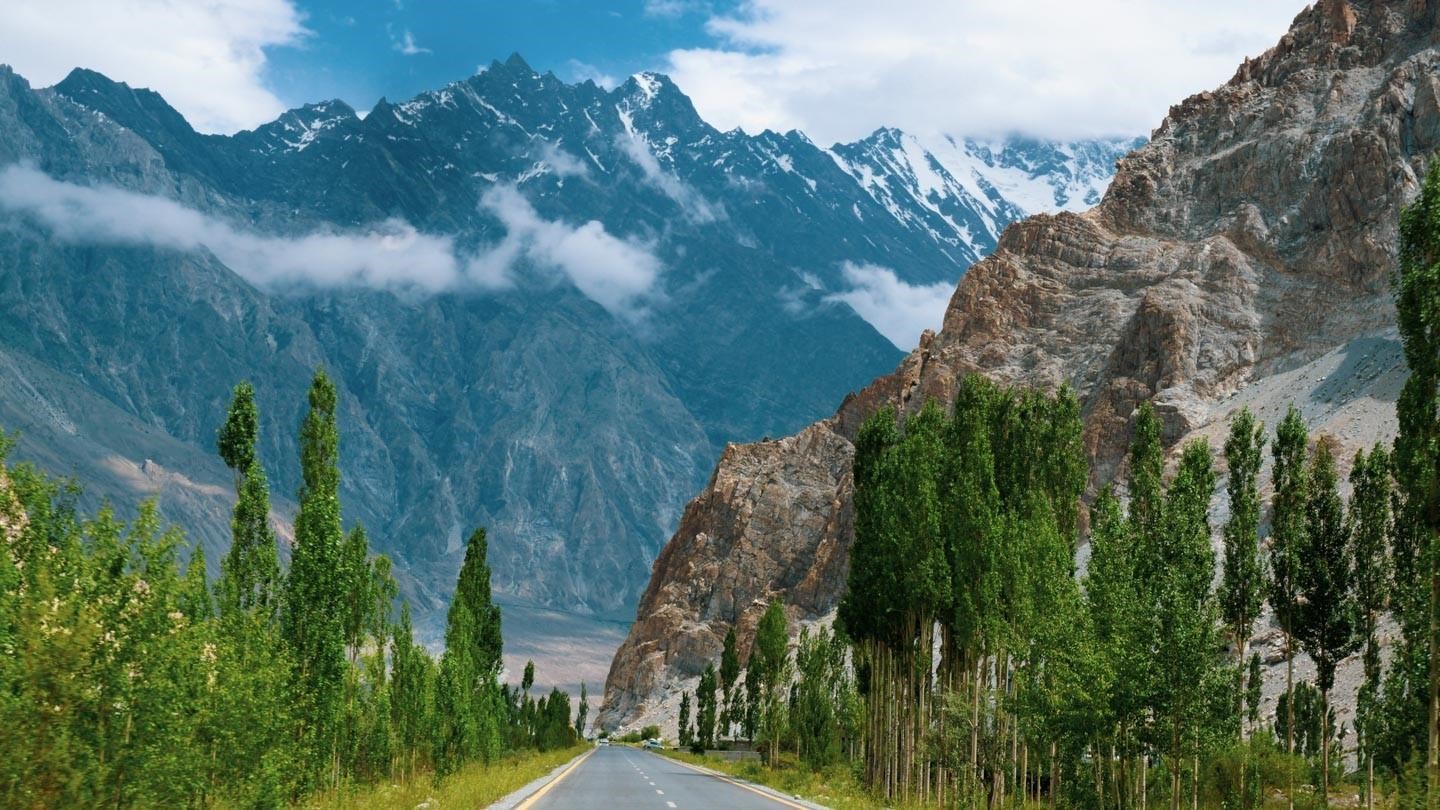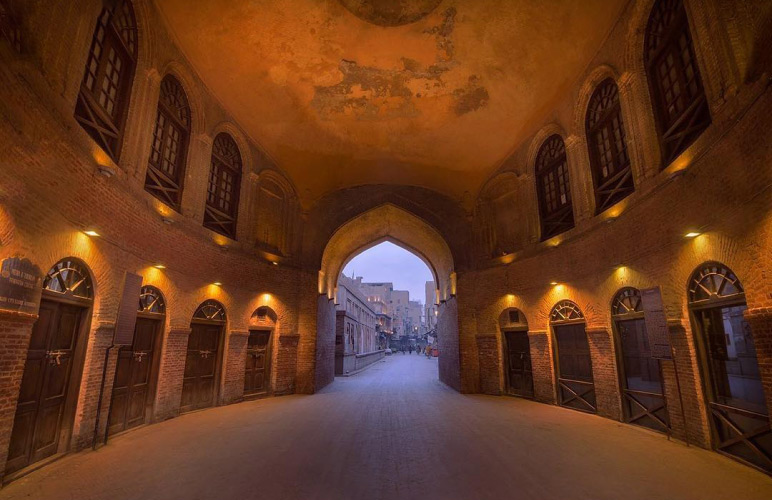Nestled amidst Pakistan’s majestic Karakoram mountains, Hunza Valley is an enchanting paradise that will steal your heart. With its awe-inspiring natural beauty, crystal-clear rivers, and lush green fields, it’s a place straight out of a fairy tale.
In A Glimpse
Known as “heaven on earth,” Hunza Valley is true to its reputation and is situated at an elevation of 2438 meters in the north of Gilgit Baltistan.
Hunza is famous for its snow-covered mountains, including the majestic Rakaposhi and Ultar Sar peaks. It’s renowned as a hub for adventure tourism activities like trekking and mountaineering, photography, traditional music and dance, and its rich cultural heritage with historical forts (Baltit Fort & Altit Fort) and traditions.
Hunza Valley is mainly divided into three regions; Upper Hunza, Central Hunza, and Lower Hunza, which are further divided into multiple villages and towns. Historically, Hunza used to be a princely state and remained so until 1974.
Hunza is a favorite natural attraction when it comes to traveling up North of Pakistan for a vast range of tourists, including trekkers, mountaineers, family vacations, or simply those looking to get away from the busy life and unwind in nature surrounded by beautiful landscapes.

About Hunza Valley Weather
The Hunza temperature varies throughout the year, offering a diverse range of experiences. During the summer months (June to August), the weather remains pleasant, with average temperatures ranging from 20°C to even 30°C (68°F to 86°F). This is the time to explore the valley’s natural beauty, go for treks, and indulge in outdoor activities.
In contrast, winter (December to February) brings a chilly yet enchanting ambiance to Hunza Valley. The temperatures can drop from -10°C to -5°C, transforming the region into a winter wonderland. Winter enthusiasts can enjoy snowfall, go skiing, or simply cozy up by the fireplace and relish the charm of the snowy landscape.
Karimabad (Baltit) Hunza Weather:
Karimabad, the capital of Hunza District, shares a similar climate with the rest of the Hunza Valley. The town enjoys pleasant weather during summer, with temperatures ranging from approx 20°C to 30°C (68°F to 86°F), offering an ideal environment for sightseeing, cultural exploration, and interacting with the warm-hearted locals.
In winter, Karimabad Hunza weather experiences colder temperatures, ranging from -10°C to -5°C (14°F to 23°F), making it a cozy and magical destination for winter enthusiasts. The snow-covered landscape and the historic Baltit Fort create a captivating ambiance that is perfect for immersing oneself in the town’s rich history and culture.

How To Reach Hunza Valley
Hunza Valley, known for its stunning landscapes and rich cultural heritage, beckons travelers from all around the world. If you’re planning a trip from Lahore to Hunza, this guide will provide you with essential information about the distance, Hunza road, routes, and tour packages to make your journey seamless and enjoyable.
Lahore to Hunza Distance:
The distance from Lahore to Hunza is approximately 600 kilometers. Traveling by road takes about 12-15 hours to reach Hunza from Lahore. The most common route is Lahore – Islamabad – Abbottabad – Mansehra – Naran – Chilas – Gilgit – Hunza. This route offers breathtaking views and ensures a memorable experience throughout your journey.
Reaching Hunza from Islamabad:
For Islamabad to Hunza, you have two options. The preferred route is Islamabad – Abbottabad – Mansehra – Naran – Chilas – Gilgit – Hunza. This route is well-traveled and offers stunning landscapes, allowing you to fully enjoy the excitement of the journey.
The alternate route is Islamabad – Mardan – Swat – Chitral – Gilgit – Hunza, which offers a slightly different but equally scenic experience.
Gilgit to Hunza
The Gilgit to Hunza distance is approximately 100 kilometers (62 miles). The most common and easy way to travel from Gilgit to Hunza is by road. The Karakoram Highway connects Gilgit to Hunza Valley. The road journey takes approximately 2 to 3 hours, depending on traffic and road conditions.
The route is famous for its stunning landscapes, winding mountain roads, and picturesque views of the Hunza River. You can hire a private taxi, join a shared taxi or minibus, or even rent a car to make the journey.
Skardu to Hunza
The Skardu to Hunza distance is approximately 310 kilometers (193 miles), and there are a few transportation options available:
The road trip from Skardu to Hunza offers awe-inspiring vistas of the Karakoram mountain range and takes you through the amazing scenic landscapes in the region. While there is no direct road connecting Skardu and Hunza, the most common route is to travel from. Another option to reach Hunza from Skardu is by air. Skardu Airport operates regular domestic flights to Gilgit. Once you reach Gilgit, you can continue your journey to Hunza by road, as mentioned earlier. The flight duration from Skardu to Gilgit is approximately 30 to 40 minutes, providing a quicker alternative to reach Gilgit before proceeding to Hunza.
Hunza Tour Packages
To make your visit to Hunza more convenient and organized, consider opting for tour packages. These packages provide a range of services, including transportation, accommodation, and guided tours, ensuring a hassle-free experience. Many reputable travel agencies offer customized tour packages to suit different preferences and budgets. Research and choose the best package that aligns with your travel needs, whether you prefer a luxurious trip or a budget-friendly adventure.

Activities In Hunza Valley
Hunza is a favorite for travelers with a wide range of interests. Many people visit to merely photograph the scenic sites, the natural gardens, lakes, and wildlife. Hunza is home to Markhor and Ibex, and if you’re lucky and patient enough, you might even get a chance to see the Snow Leopards.
Other people visit Hunza just to get away from their busy lives for a family vacation or just a solo unwinding.
This magical valley offers all kinds of retreats and attractions, including:
- Altit Fort & Baltit Fort: Remnants of the time when Hunza used to be a princely state, and the Royals used to stay here.
- Lady Finger Peak: Lady Finger Peak, at 6000 Meters, and Hunza Peak, at 6,270 Meters, are two mid-range mountains for mountaineers.
- Ganish Village: The oldest village in the region, dating back almost 800 years ago.
- Eagle’s Nest: The Highest Viewpoint of the Valley offering mesmerizing views.
Lakes in Hunza Valley
Hunza Valley, nestled amidst the mighty Karakoram Range, is renowned for its breathtaking natural beauty. Among its many wonders, the lakes in Hunza Valley stand out as serene gems that captivate the hearts of visitors.
Attabad Lake:
Attabad Lake is a true marvel of nature, formed after a massive landslide in 2010. This sparkling turquoise lake, also known as Gojal Lake, stretches across the Hunza River.
The sight of the crystal-clear waters against the backdrop of towering mountains is nothing short of awe-inspiring. Visitors can take a boat ride or simply relax by the lakeside, soaking in the tranquility and admiring the surreal beauty of the lake in Hunza.
Borith Lake:
Located near the village of Borith in Upper Hunza, Borith Lake is another enchanting lake that deserves a spot on your itinerary. Surrounded by vibrant green meadows and snow-capped peaks, this high-altitude lake offers a serene ambiance and breathtaking views.
It is also a habitat for various migratory birds, making it a paradise for birdwatchers. Take a leisurely walk along the lakeshore, breathe in the fresh mountain air, and the serenity of Borith Lake will rejuvenate your soul.
Passu Cones and Lake:
The mesmerizing Passu Cones, a series of majestic peaks, create a dramatic backdrop for the serene lake in Passu Village. The combination of these towering peaks and the tranquil waters creates a postcard-worthy landscape.
Visitors can indulge in photography, take peaceful walks along the lakeside, or simply sit and immerse themselves in the breathtaking surroundings. The reflection of the Passu Cones in the calm waters of the lake creates a surreal visual experience that will leave you amazed.
Rush Lake:
For those seeking a more adventurous experience, a trek to Rush Lake is highly recommended. Located at an elevation of about 4,694 meters (15,397 feet), it is one of the highest alpine lakes in the world.
The trek to Rush Lake offers breathtaking views of glaciers, valleys, and snow-capped peaks. Reaching the pristine lake at the end of the trek is a rewarding experience that allows you to witness nature’s grandeur in all its glory.

Best Hotels in Hunza
To enhance your experience in this magical destination, choosing the right accommodation is crucial. Let’s explore some of the best Hunza hotels that offer a combination of comfort, luxury, and breathtaking views.
Luxus Hunza Attabad Lake Resort:
Nestled in the serene surroundings of Attabad Lake and Luxus Hotel Hunza, Luxus Hunza Attabad Lake Resort offers a luxurious retreat amidst nature’s splendor. This five-star resort boasts elegantly appointed rooms and suites that provide modern amenities and magnificent views of the lake and surrounding mountains. Immerse yourself in the tranquility of the lake, indulge in delectable cuisine at the on-site restaurant, and experience unparalleled hospitality at this exquisite resort.
Eagle Nest Hunza:
Perched on a hilltop, Eagle Nest Hunza offers panoramic views of the entire Hunza Valley. This charming hotel features comfortable rooms with traditional décor and modern amenities.
Start your day at the sight of the rising sun over the majestic peaks, savor delicious local cuisine at the rooftop restaurant, and soak in the serenity of the surrounding landscapes. Eagle Nest Hunza is an ideal choice for those seeking a peaceful and picturesque retreat.
Darbar Hotel Hunza:
Located in the heart of Karimabad, the capital of Hunza District, Darbar Hotel Hunza offers a blend of comfort and cultural immersion. The hotel features well-appointed rooms and suites, showcasing traditional architecture and modern amenities.
From the rooftop terrace, marvel at the panoramic views of the Karakoram Range and the iconic Baltit Fort. Darbar Hotel Hunza provides a central location to know the vibrant culture and rich heritage of the region.
Serena Hunza:
Serena Hunza is an oasis of luxury and tranquility situated in the midst of the breathtaking Hunza Valley. This five-star hotel showcases a blend of modern comforts and traditional charm. With spacious rooms offering stunning views, multiple dining options serving local and international cuisines, and a range of recreational facilities, Serena Hunza ensures a memorable stay.
Tourist Cottage Hunza
Located amidst the majestic Karakoram Mountains, Tourist Cottage Hunza provides a tranquil escape from the hustle and bustle of daily life. Step into the cottage, and you’ll be greeted by warm hospitality and a serene ambiance that instantly puts you at ease.
Each room is thoughtfully designed, blending traditional touches with modern comforts to ensure a delightful stay. Immerse yourself in the mesmerizing view of the terraced fields, fruit orchards, and the iconic Baltit Fort just a stone’s throw away.

FAQs
Where is the Hunza Valley located?
Hunza is located in the Gilgit-Baltistan region of northern Pakistan. It is nestled in the Karakoram mountain range, bordered by China’s Xinjiang province to the north and Afghanistan’s Wakhan Corridor to the northwest.
How do I reach the Hunza Valley?
The most common way to reach the Hunza Valley is by flying to Gilgit Airport and then taking a road journey from Gilgit to Hunza. Alternatively, you can also drive from Islamabad, which takes approximately 18-20 hours.
Which is the recommended season to visit the Hunza Valley?
The best time to visit the Hunza Valley is during the spring and autumn seasons, from April to June and even September to November. These months offer pleasant weather, blooming apricot, and cherry blossoms in spring, and vibrant autumn foliage.




